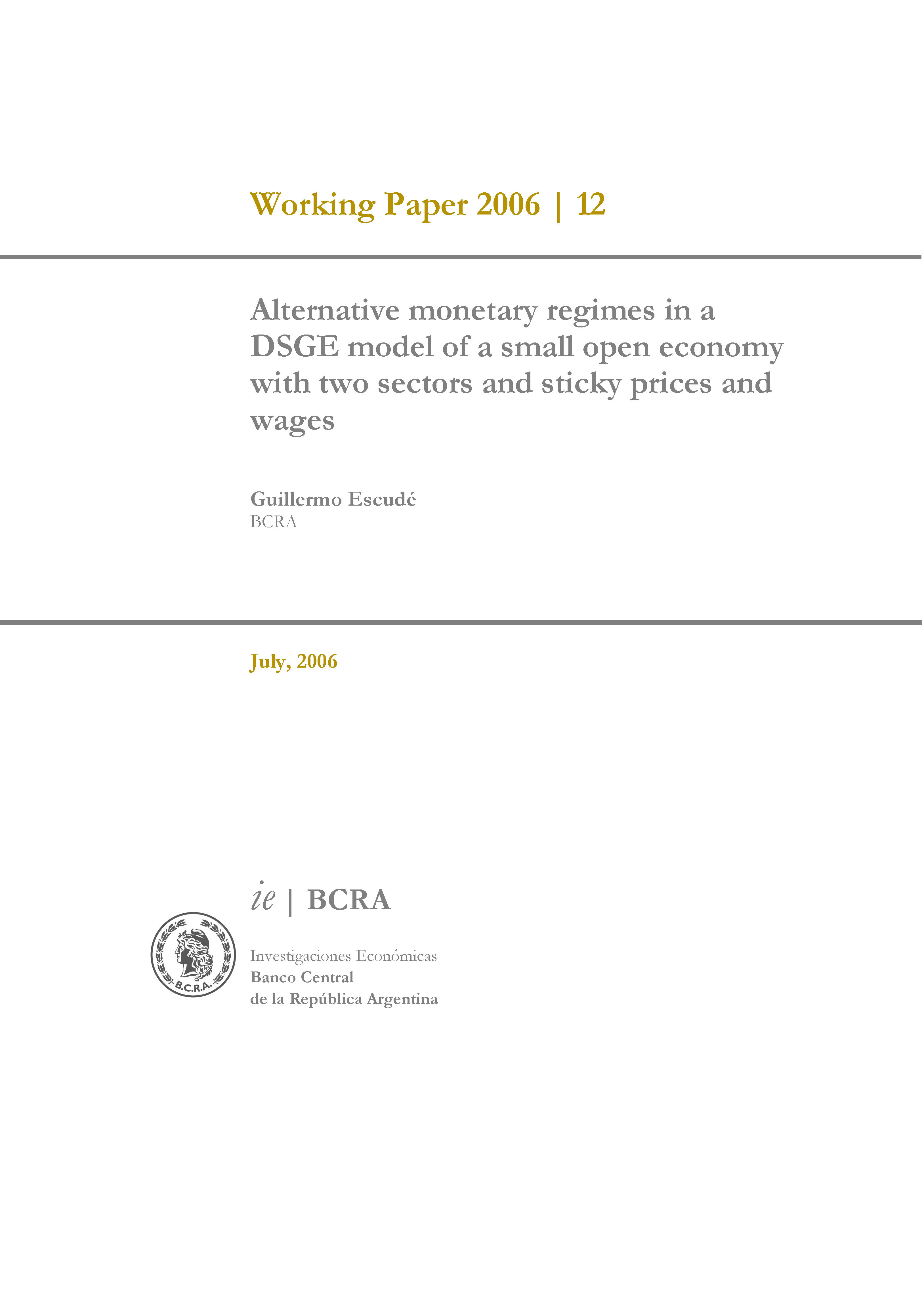Alternative Monetary Regimes in a DSGE Model of a Small Open Economy with Two Sectors and Sticky Prices and Wages
Working papers | 2006 | N 12
Keywords:
DSGE models, Small open economy, Monetary policy, Exchange rate policy, Sticky prices and wagesAbstract
This paper develops a dynamic stochastic general equilibrium (DSGE) model for a small open economy (SOE) that can be calibrated to simulate the macro dynamics of a semi-industrialized developing country like Argentina. We consider a multilateral non-commodity trade environment, with the U.S.A. and Europe as trade partners, and assume that the Law of One Price does not hold for the goods that the U.S.A. and Europe trade between them. We show that this makes the U.S.A.'s multilateral real exchange rate (MRER) a key fundamental for the SOE's MRER, in addition to its terms of trade. The SOE produces and consumes exportable and nontradable goods using labor (and in the case of exportables, imports). There is a representative, perfectly competitive firm producing exportables and operating under perfectly flexible export and import prices. Monopolistic competition with price (wage) stickiness prevails for non-tradable firms (house-holds). These set prices (wages) subject to a price/wage adjustment cost function. There coexist both forward and backward looking firms. The latter use a "rule of thumb" to change prices that gradually corrects their price to that of optimizing firms. Alternative monetary or foreign exchange policy rules, including a fixed exchange rate, inflation targeting under a pure float and inflation targeting under a managed float, complete the dynamic systems. The non-stochastic steady state is analyzed in detail for the alternative models and the log-linearized systems are obtained.
JEL classification: E52, F41, F31


